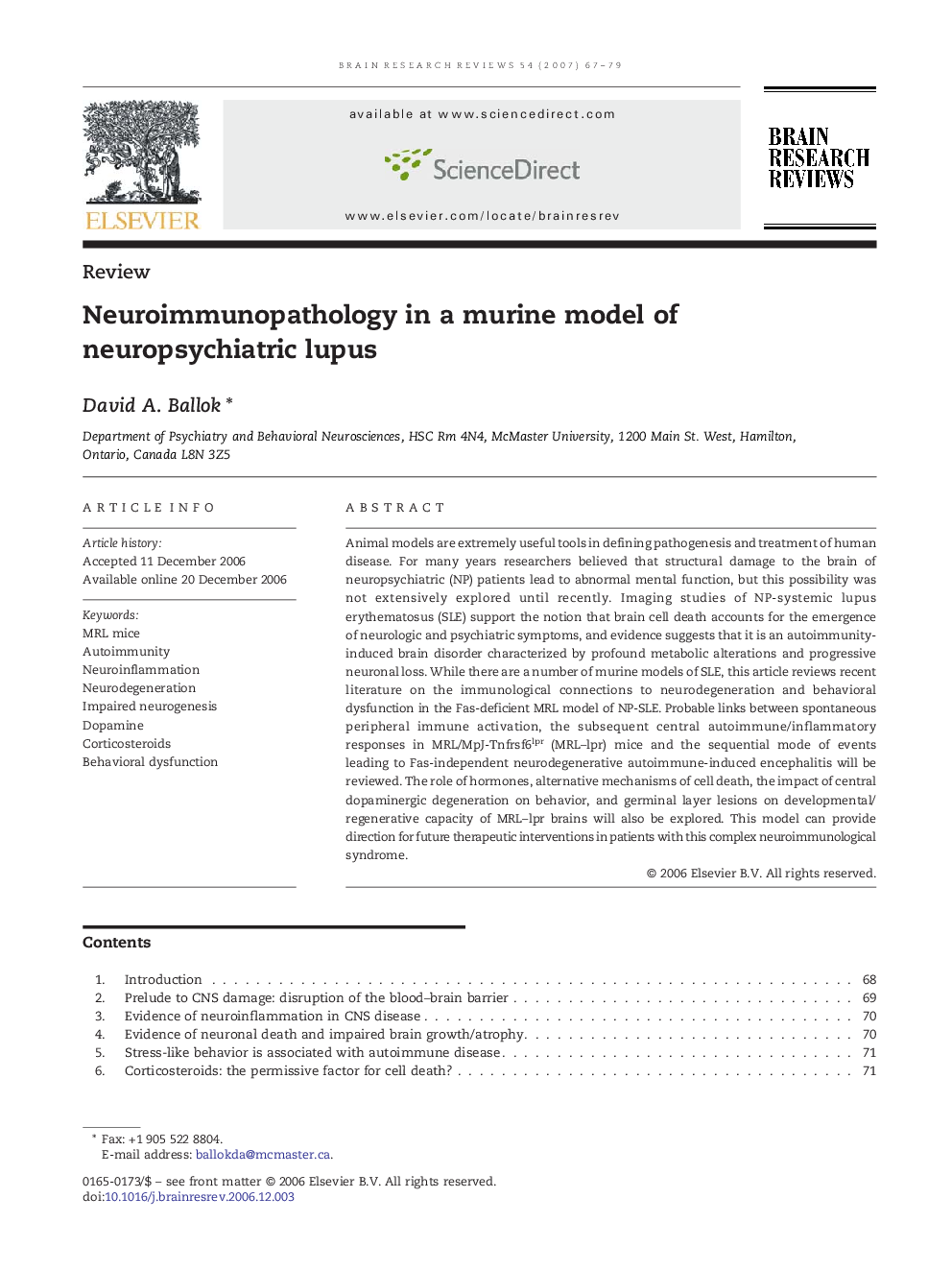| Article ID | Journal | Published Year | Pages | File Type |
|---|---|---|---|---|
| 4333885 | Brain Research Reviews | 2007 | 13 Pages |
Animal models are extremely useful tools in defining pathogenesis and treatment of human disease. For many years researchers believed that structural damage to the brain of neuropsychiatric (NP) patients lead to abnormal mental function, but this possibility was not extensively explored until recently. Imaging studies of NP-systemic lupus erythematosus (SLE) support the notion that brain cell death accounts for the emergence of neurologic and psychiatric symptoms, and evidence suggests that it is an autoimmunity-induced brain disorder characterized by profound metabolic alterations and progressive neuronal loss. While there are a number of murine models of SLE, this article reviews recent literature on the immunological connections to neurodegeneration and behavioral dysfunction in the Fas-deficient MRL model of NP-SLE. Probable links between spontaneous peripheral immune activation, the subsequent central autoimmune/inflammatory responses in MRL/MpJ-Tnfrsf6lpr (MRL–lpr) mice and the sequential mode of events leading to Fas-independent neurodegenerative autoimmune-induced encephalitis will be reviewed. The role of hormones, alternative mechanisms of cell death, the impact of central dopaminergic degeneration on behavior, and germinal layer lesions on developmental/regenerative capacity of MRL–lpr brains will also be explored. This model can provide direction for future therapeutic interventions in patients with this complex neuroimmunological syndrome.
